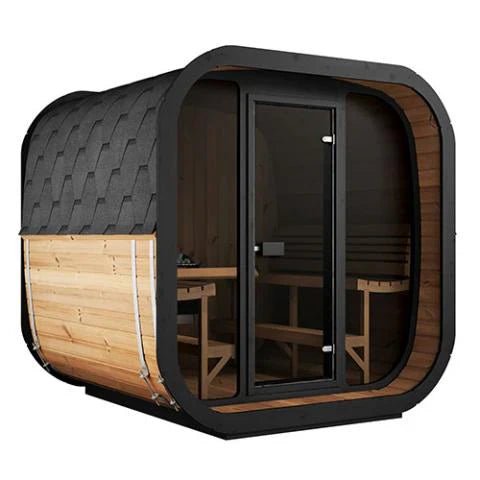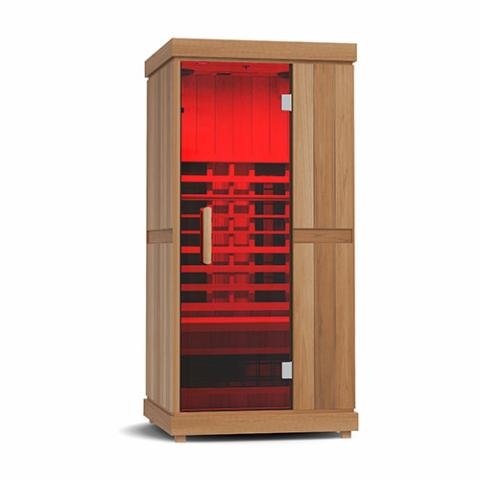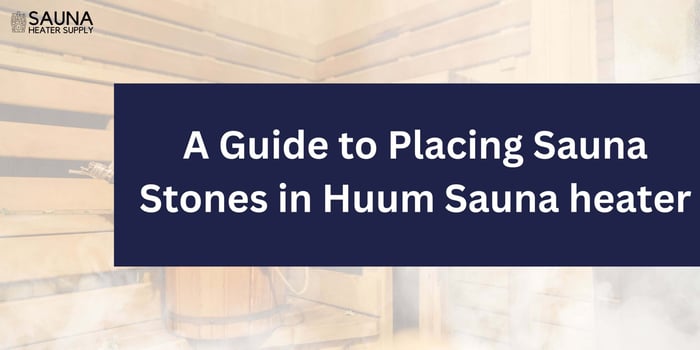Table of Contents
Almost every day at my job as a sauna technician, I hear people debating about the perfect sauna temperature. This is especially important if you're using a sauna for health benefits.
The truth is, the “best” sauna temperature depends on personal preference. What feels just right for one person might be too hot or just meh for someone else.
Also, not all saunas feel the same—even among traditional Finnish saunas (excluding infrared saunas and steam rooms). The type of heater, the size of the room, and even how well the air flows all affect how the heat feels.
However, there are certain factors you need to consider when picking a temperature that matches your comfort level, health goals, and what feels best for you.
Ideal Sauna Temperature and Duration for Health Benefits
SaunaLife Model CL7G

$7,990.00
$9,987.50
SaunaLife Model CL7G Experience the ultimate in outdoor relaxation with the SaunaLife Cube-Series Model CL7G, a luxurious home sauna featuring a modern Scandinavian design and a striking full-glass front. Designed for up to six bathers, its spacious interior boasts over… read more
Interior of Finnmark FD-4 Trinity Infra-Steam Sauna
Generally, sauna temperatures between 149–185°F (65–85°C) are ideal for health benefits.
The health benefits, in this case, include stress reduction and improved cardiovascular well-being.
Sauna Type | Optimal Temperature Range | Key Benefits | Precautions (depending on what your body is telling you) |
Traditional Sauna (Dry Sauna) | 70–100°C (158–212°F) | Improves circulation, detoxification, muscle relaxation, and stress relief. | Stay hydrated, limit sessions to 15–20 minutes. |
Infrared Sauna | 45–65°C (113–149°F) | Deep tissue penetration, better detoxification at a lower heat, enhances relaxation. | Avoid prolonged exposure; the ideal session is 20–30 mins. |
Steam Sauna (Wet Sauna) | 40–50°C (104–122°F) | Skin hydration, improved breathing, and respiratory relief. | Can feel hotter due to high humidity; avoid it if sensitive to heat. |
When I stayed in Finland, I found that public saunas were often too hot and dry, especially if not many people had used them and no one had added water to the heater.
You don’t need to focus too much on the exact temperature or what’s “best.” Just sit for a while and add more löyly (steam). You'll sweat no matter what. The key is doing what feels right for you; for most people, that's around 80°C.
The real benefit comes from using the sauna in the first place. Just like with the gym—if you don’t go, you won’t see results, but even a short session is better than nothing.
The important thing is that regular sauna use helps over time for those health benefits.
Reason Why the Type of Sauna Matters…

Interior of SaunaLife Model CL5G sauna
The type of sauna you choose—whether infrared, traditional, or steam—will affect your experience. Each sauna works differently and impacts your body in unique ways.
Traditional Finnish Saunas
It works by heating a room with a wood-burning stove containing hot stones and then throwing water onto the stones to create a burst of steam (löyly) that increases temperature.
Many people aim for 155 to 175°F (65 to 90°C) when using traditional saunas for health benefits.
Infrared Saunas
Finnmark FD-1 Full-Spectrum Infrared Sauna

$4,695.00
$5,868.75
Finnmark FD-1 Full-Spectrum Infrared Sauna Transform any space in your home into a personal wellness escape with the compact Finnmark FD-1 Full Spectrum, 1-Person Infrared Sauna. The only infrasauna in the industry that combines UL Listed Spectrum Plus™ infrared heaters… read more
Instead of heating the air, infrared saunas use lamps that emit infrared light, which directly warms your skin. This allows you to enjoy the heat without feeling overwhelmed by high temperatures.
There are models of infrared saunas that heat up to 170°F, with 100-125°F being ideal for longer sessions and to enjoy the maximum benefit on the skin.
Outdoor infrared saunas may take longer to heat up in colder weather.
Steam Saunas
Steam rooms operate at lower temperatures but with high humidity, making them feel hotter than the actual temperature.
The air temperature plus the humidity should total around 200. For example, if the air temperature is 120°F, aim for 80% humidity (120 + 80 = 200).
Final Take
Don’t overthink it…
Each sauna is unique. For example, the same 75°C can feel totally different in different saunas. My wood stove sauna feels perfect around 100°C, but my electric sauna at home is great at 75-80°C.
If you're new to saunas, start with temperatures between 70-85°C and leave whenever you feel like it.
As you get used to it, you can try going up to 100°C or more to see how you feel, but only if you can access a sauna that can go that high.
I know gym saunas usually don’t reach those temperatures, so if that’s your only option, you might just be sitting in a warm room rather than a sauna.
Are you thinking of investing in a personal sauna? We have a wide collection of indoor saunas at Sauna Heater Supply, available in various capacities for small homes and apartments.





